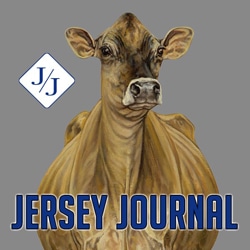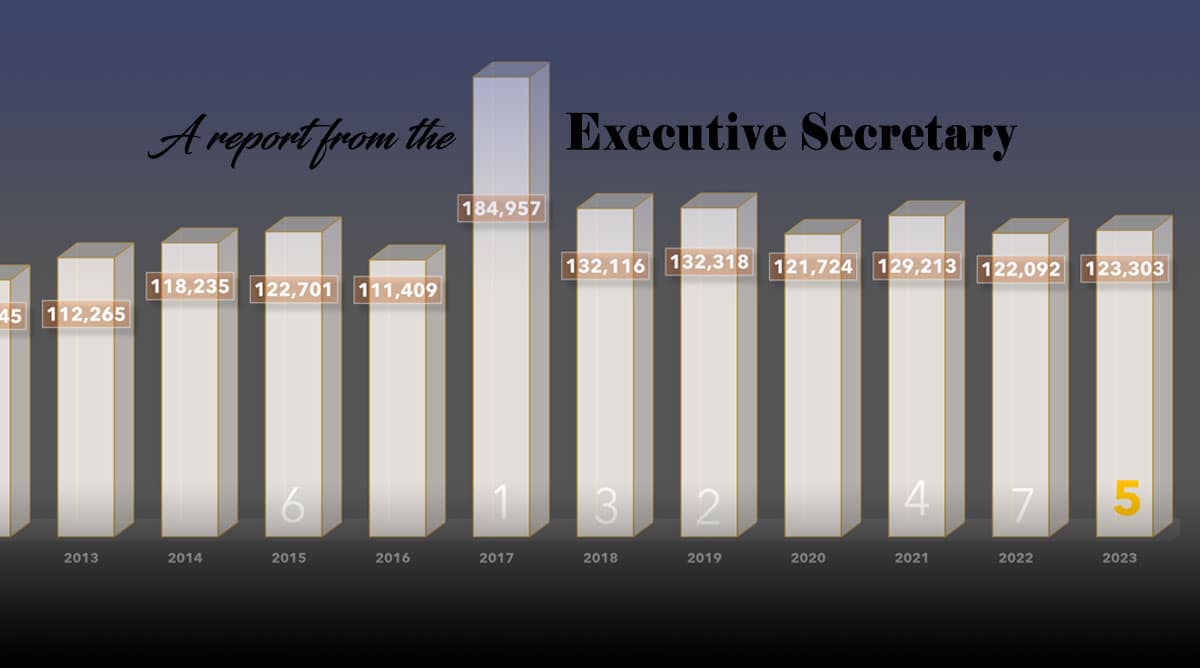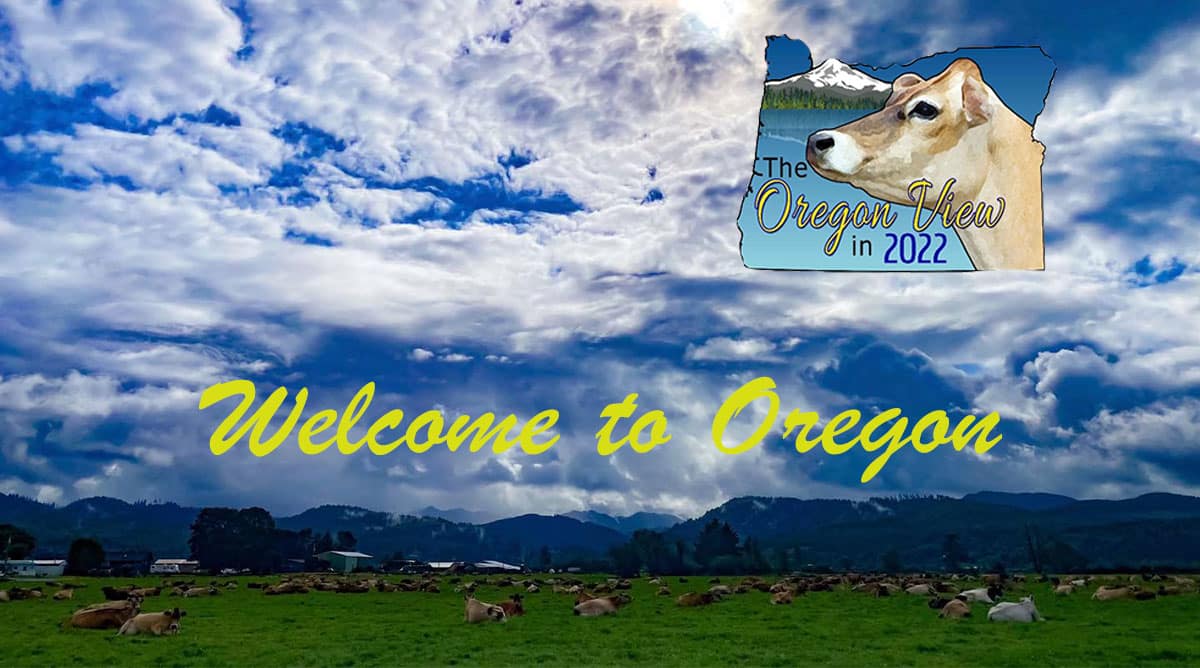Jersey Success Hinges on Ability to Adapt
Change, change, change. While it is happening faster in some sectors, it is a consistent theme across the dairy industry.
In his message to members at the Annual Meeting of the American Jersey Cattle Association (AJCA), Executive Secretary Neal Smith described how the national Jersey organizations have responded to change and discussed industry trends that will impact the association in the future. His annual review in Springfield, Mass., in late June, also highlighted Jersey’s performance and key programs from 2023.
Though it impacts us in many ways, change is not always a bad thing. “It eliminates the traditional ways of doing things while also creating new opportunities,” said Smith. “As an association, we want to be nimble so we can act as quickly as possible to adapt and adjust.”
That takes leadership, and this is a strong board that is tuned into what is happening in the industry, Smith summed. He encouraged Jersey breeders to interact with the board and keep ideas coming. “One of the programs we just announced is a direct result of feedback from breeders.”
A Synopsis of 2023
Last year, the AJCA registered 123,303 animals, the fifth highest in history and the 12th consecutive year registrations exceeded 100,000.
At year-end, there were 154,754 cows in 1,085 herds enrolled in AJCA performance programs. Of these, 151,360 cows in 988 herds were enrolled in REAP, with an average herd size of 153 cows. This number is down a little from the previous year due to a contraction in herds, particularly large herds, remarked Smith.
Appraisers scored 107,551 animals in 1,465 herds across 47 states in 2023. This was the 11th consecutive year the team scored more than 100,000 cows.
Jersey production climbed to a record high of 20,710 lbs. milk, 1,038 lbs. fat (5.01%) and 778 lbs. protein (3.75%) on a mature equivalent basis. We continue to improve production because all our services and all our indexes are “performance, performance, performance-based” noted Smith.
New Performance Program
A new performance program for larger herds will be available beginning October 1, 2024. With a minimum herd size of 1,000 Jersey cows, fees will be based on the number of first lactation cows and include some of the core services.
The cost includes an annual $400 herd fee plus per-cow fees that decrease as herd size increases. Fees for the first 50 cows are $30 per cow per year. Per cow fees step down in three additional categories, eventually settling at $15 per cow at the 300-cow mark. The program includes registration fees for animals under six months of age and appraisal of first lactation cows. Subscriptions to JerseyLink, HerdView and JerseyMate are available for $2,000 per year.
Though the fees may seem high, keep in mind that this is not a whole herd program, but rather based on first lactation cows, noted Smith.
With this program, “We would like to attract some who were enrolled in programs, particularly REAP, in the past but withdrew over time,” remarked Smith. “It could also be a start-in program for large herds, to wet their taste buds on the services we offer.”
Why were the subscriptions added? When we surveyed herds that are currently on REAP—large herds in particular—and herds that discontinued REAP, these three programs were mentioned frequently, noted Smith. We often heard comments like, “How do I get HerdView,” and “I miss JerseyMate.”
“The board didn’t arrive at their decision in five minutes,” said Smith. “This is a well-thought-out program.” It was developed by a committee that included four board members and four staff members who worked on it for several months and incorporated feedback from breeders.”
The Significance of Leadership
Smith used a slide showing the growth of REAP to illustrate the importance of leadership, listening and adapting programs.
In 1994, before the implementation of REAP, there were about 52,000 cows enrolled in performance programs of the Jersey association. The following year, more than 70,000 were enrolled in all programs. By 2003, cow numbers surpassed 100,000. Most of the growth was enrollment on REAP.
How did that come about?
Smith explained. At that point, the first Hilmar cheese plant had been operating for about a decade.
“The original Hilmar owners were already Equity members, committed to milk marketing,” he said. They had partially registered herds but wanted fully registered herds. When founders like Richard Clauss and Donnie Sherman took on leadership roles, they were telling us, “Let’s design something that will help us build fully registered herds.”
The concept of REAP—registration, Equity, appraisal and performance—caught on because it met the needs of breeders.
“That first year of implementation in 1995, an additional 15,000 cows were enrolled on performance programs,” said Smith. “I bet 14,000 of them came from Hilmar. They put their money where their mouth was.”
As always, though, we are faced with new challenges, noted Smith. Enrollment on REAP has dipped over the past 3-4 years, not from a single factor, but many.
“One of these is the declining number of licensed dairies in this country,” Smith said. In 2003, that number was more than 70,000. Today it is about 26,000.
“That is a lot of change, and it has a big impact,” he continued. Everyone in the dairy industry is going to have to rethink strategy and implement change.
The bright spot in the current dairy situation is that the cow count has remained relatively constant over the past decade, at about 9 million cows.
Body Condition Scores to be Linearly Evaluated
Linking type to performance in every way possible has been another reason the production of the Jersey cow has increased, remarked Smith. In the 1970s, when the board said, “We have to change the cow,” people like Al Meyer knew what she needed to look like to be more profitable. Our type appraisal program has been moving in this direction ever since.
This past week, the board approved a recommendation by the AJCA Type Committee that aims to study if and how body condition scores impact performance. This fall after training is completed, appraisers will begin to linearly evaluate body condition scores on all cows appraised.
The evaluation will not impact final score, Smith noted. Rather, this is a research project. If the data show a connection between condition and performance, we will develop a method of identifying and sorting the cows that take better care of themselves while performing well.
New Formulas for Two Genetic Indexes
Smith also touched on new formulas for Jersey Performance Index (JPI) and Jersey Udder Index (JUI), which also involved input from breeders, board members and allied industry.
The biggest change for JPI is that there is more focus on traits that most heavily influence profitability and a cow’s ability to stay in the herd. The emphasis is up 6% for production traits, with a weighting of 55%. The balance of the index is represented by fertility traits at 15%, survival traits at 10% (up 2% over the previous version), udder traits at 10% and health traits at 10%.
The new JUI has been designed as a standalone publishable index. “The previous index was not designed for that, but did get that kind of attention and use,” exclaimed Smith. The big change here is that several udder traits moved from high and low desirables to intermediate optimal.
“A good example of this is teat placement,” noted Smith. A central location on the quarter is desirable, so the new formula rewards central placement—25—on the linear scale of 1-50 and penalizes extremes.
Youth Programs
One thing on which we can all agree is that Jersey youth programs are on solid ground and there are lots of good things happening, said Smith. “But we need to do more. We need young people to be involved. Support does not just mean financial. Encouragement is important too.”
Smith wrapped up his presentation with a pair of images that illustrated that change can indeed be a good thing. His comparison was images of the ideal Jersey from the 1970s and the current version, released in 2018.
Six official portraits have been created over the years, five on display in the conference room at AJCA headquarters in Reynoldsburg, Ohio. They are a perfect means of visualizing breed progress.
“If you read the AJCC (American Jersey Cattle Club) board minutes across time, somewhere in the 1940s, they realized they had a good cow, but her udder was sloppy. They were willing to compromise production to improve udders.”
They got it done with the 1970s cow, sometimes called “the orange cow.” Her udder is beautifully shaped and will last. Many considered her to be an improvement on the previous cow. Sometime later, though, Jersey leaders said, “Surely we can do better.”
So, here we are today with the profitable beast we call “The Jersey.” It took everybody—leaders and members—to make it happen.
Over the years, making decisions that incorporated profitability into our programs and services was not always popular. There were days when the executive secretary would be afraid to say “performance, performance, performance.”
Happily, I am not one of those executive secretaries, and I thank you for giving me the liberty to speak my mind, Smith said. We will press on with the mission to provide services that support genetic improvement and greater profitability of Registered Jerseys.




